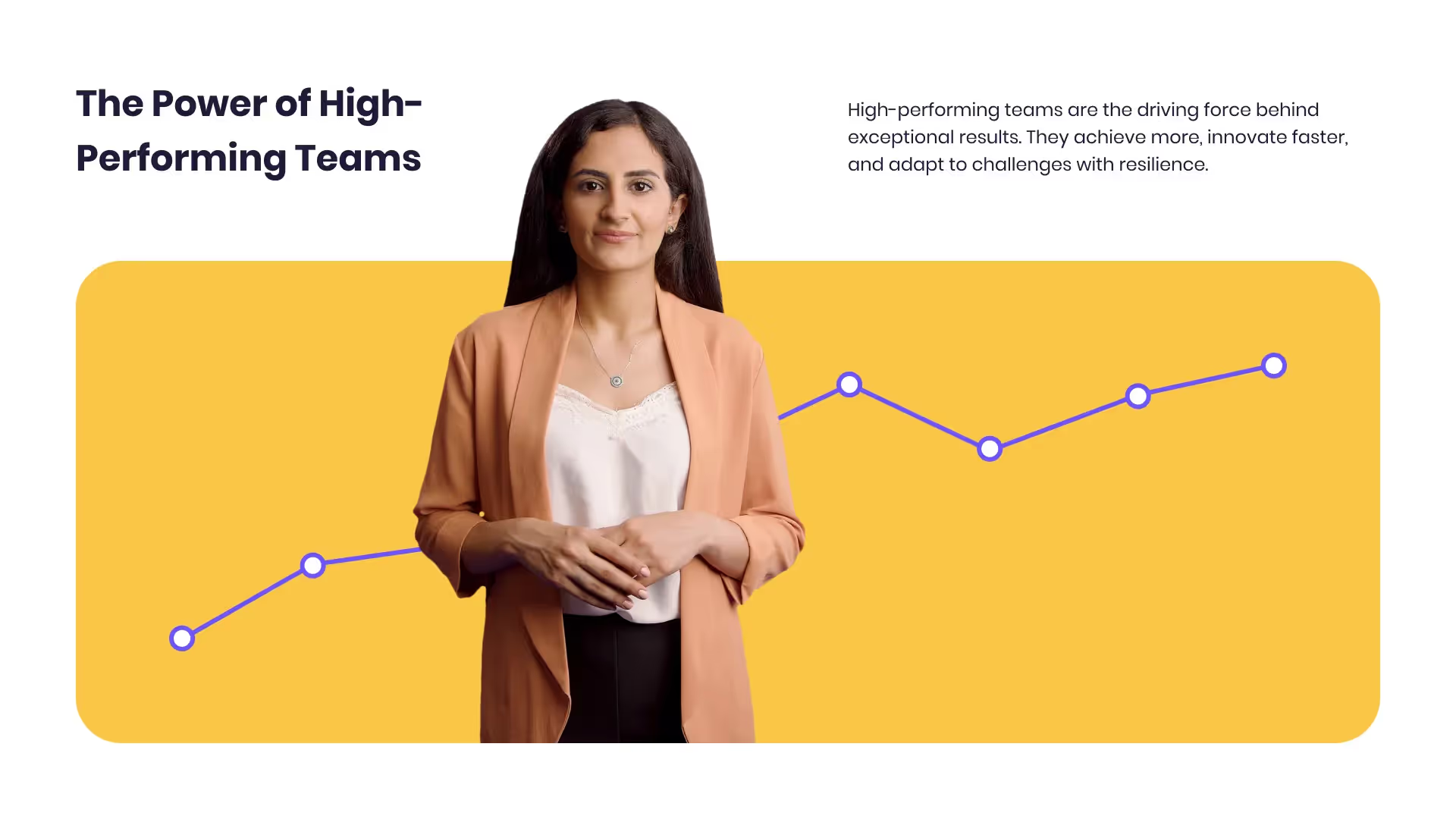Want a personalised avatar?
.avif)
Create an Instant Avatar in under a minute using your phone or camera. Fast, simple, and true to you.

4 Best AI Video Generator Apps (Free & Paid Options Compared)


This guide compares five AI video generator apps that people are actually using today: Invideo AI, PixVerse, VideoGPT, and Adobe Firefly. I looked at user ratings, real-world feedback, speed, language coverage, avatar and lip-sync capability, template depth, safety for commercial use, collaboration options, and value for money. I also included practical workflows for how I pair these tools with Colossyan to create on-brand, interactive training that plugs into an LMS and can be measured.
If you want my quick take: use a generator for visuals, and use Colossyan to turn those visuals into training with narration, interactivity, governance, analytics, and SCORM. Most teams need both.
Top picks by use case
- Best for quick explainers and UGC ads: Invideo AI
- Best for viral effects and fast text/image-to-video: PixVerse
- Best for anime styles and frequent posting: VideoGPT
- Best for enterprise-safe generation and 2D/3D motion: Adobe Firefly
- Where Colossyan fits: best for L&D teams needing interactive, SCORM-compliant training with analytics, brand control, and document-to-video scale
1) Invideo AI - best for speedy explainers and UGC ads
Invideo AI is built for quick turnarounds. It handles script, visuals, and voiceovers from a simple prompt, supports 50+ languages, and includes AI avatars and testimonials. On mobile, it holds a strong rating: 4.6 stars from 24.9K reviews and sits at #39 in Photo & Video. On the web, the company reports a large base: 25M+ customers across 190 countries.
What I like:
- Fast to a decent first draft
- Good for product explainers and short social promos
- Built-in stock library and collaboration
What to watch:
- Users mention performance bugs and pricing concerns relative to stability
Example to try: “Create a 60-second product explainer in 50+ languages, with an AI-generated testimonial sequence for social ads.”
How to use Colossyan with it at scale:
- Convert product one-pagers or SOP PDFs into on-brand videos with Doc2Video, then standardize design with Brand Kits.
- Fix tricky names and jargon using Pronunciations so narration is accurate.
- Add quizzes and branching for enablement or compliance. Then I export SCORM, push to the LMS, and track completion with Analytics.
- Manage multi-team production using Workspace Management, shared folders, and inline comments.
2) PixVerse - best for trending effects and rapid text/image-to-video
PixVerse is big on speed and effects. It’s mobile-first, offers text/image-to-video in seconds, and features viral effects like Earth Zoom and Old Photo Revival. It has 10M+ downloads with a 4.5 rating from 3.06M reviews.
What I like:
- Very fast generation
- Fun, trend-friendly outputs for TikTok and shorts
What to watch:
- Daily credit limits
- Face details can drift
- Some prompt-to-output inconsistency
- Users report per-video credit cost rose from 20 to 30 without clear notice
Example to try: “Revive old employee photos into a short montage, then add Earth Zoom-style transitions for a culture reel.”
How to use Colossyan with it at scale:
- Embed PixVerse clips into a Colossyan lesson, add an avatar to deliver policy context, and layer a quick MCQ for a knowledge check.
- Localize the whole lesson with Instant Translation while keeping layouts and timings intact.
- Export SCORM to track pass/fail and time watched in the LMS; Analytics shows me average quiz scores.
3) VideoGPT - best for anime styles, cinematic looks, and frequent posting
VideoGPT leans into stylized content, including anime and cinematic modes. It reports strong usage: 1,000,000+ videos generated. The App Store listing shows a 4.8 rating from 32.4K reviews. The pricing is straightforward for frequent creators: $6.99 weekly “unlimited” or $69.99 yearly, with watermark removal on premium.
What I like:
- Versatile aesthetics (anime, cinematic) and easy volume posting
- Monetization-friendly claims (no copyright flags) on the website
What to watch:
- Watermarks on free plans
- Some technical hiccups mentioned by users
Example to try: “Produce an anime-styled explainer for a product feature and post daily shorts on TikTok and YouTube.”
How to use Colossyan with it at scale:
- Wrap VideoGPT clips in consistent intros/outros using Templates and Brand Kits, so everything looks on-brand.
- Keep terms consistent with cloned Voices and Pronunciations.
- Add branching to simulate decisions for role-based training, then export a SCORM package for LMS tracking.
4) Adobe Firefly - best for enterprise-safe 1080p, 2D/3D motion, and B-roll
Firefly’s pitch is quality and safety. It generates 1080p video from text or image prompts, supports 2D/3D motion, and focuses on commercial-safe training data. See: 1080p video, 2D/3D, and licensed/public domain materials.
What I like:
- Clear stance on legality and brand safety
- Strong for turning static assets into cinematic motion
What to watch:
- You may need to add voice and lip-sync elsewhere for end-to-end production
- Confirm the latest token/credit model
Example to try: “Transform a static hardware product photo set into 1080p cinematic B-roll for a launch deck.”
How to use Colossyan with it at scale:
- Import B-roll into Colossyan, add avatar narration, then layer quizzes and branching to turn marketing visuals into interactive training.
- Translate the module with one click and export SCORM 1.2 or 2004 for the LMS.
Honorable mentions and what benchmarks say
Recent comparisons point to several strong tools beyond this list. A standardized 10-tool test highlights filmmaker controls in Kling, realistic first frames in Runway Gen-4, and prompt accuracy in Hailou. It also notes cost differences, like plans from $8–$35 monthly and per-minute outputs such as $30/min for Google Veo 2.
Many platforms still lack native lip-sync and sound, which is why pairing tools is common. Practical takeaway: plan a multi-tool stack-use one for visuals and finish inside Colossyan for narration, interactivity, analytics, and LMS packaging.
Free vs paid: what to know at a glance
- Invideo AI: free version with weekly limits; robust paid tiers. App rating details and customer scale.
- PixVerse: daily credits constrain throughput; users report credit-per-video changes. Mobile rating and downloads.
- VideoGPT: free plan (up to 3 videos/day), paid at $6.99 weekly or $69.99 yearly; App rating.
- Adobe Firefly: commercially safe approach; confirm evolving token/credit structure.
Where Colossyan fits: the L&D-focused AI video platform
If your videos are for training, you need more than a generator. You need accurate narration, interactivity, analytics, and LMS compatibility. This is where Colossyan really shines.
- Document/PPT/PDF to video: Turn HR policies, compliance docs, or SOPs into structured, scene-by-scene videos with Doc2Video.
- Interactive learning: Add Multiple Choice Questions and Branching for decision-based scenarios, and track scores and completion.
- SCORM export and analytics: Export SCORM 1.2/2004 to the LMS, then measure pass/fail, watch time, and scores; I export CSVs for reports.
- Governance at enterprise scale: Manage roles and permissions with Workspace Management, organize shared folders, and collect comments in one place.
- Brand control: Enforce Brand Kits, Templates, and a central Content Library so everything stays consistent.
- Precision speech: Fix brand name and technical term pronunciation with Pronunciations and rely on cloned voices for consistent delivery.
- Global rollout: Use Instant Translation to replicate the full video-script, on-screen text, and interactions-into new languages while preserving timing.
Example workflows you can reuse
- Social-to-training pipeline: Generate a 15-second PixVerse effect (Old Photo Revival). Import into Colossyan, add an avatar explaining the context, include one MCQ, export SCORM, and track completions.
- Product launch enablement: Create cinematic B-roll with Firefly. Build a step-by-step walkthrough in Colossyan using Doc2Video, add branching for common objections, then localize with Instant Translation.
- Anime explainer series: Produce daily intros with VideoGPT. Standardize your episodes in Colossyan using Brand Kits, cloned Voices, Pronunciations, and use Analytics to spot drop-offs and adjust pacing.
Buyer’s checklist for 2025
- Do you need commercial safety and clear licensing (e.g., Firefly)?
- Will you publish high volume shorts and need fast, trendy styles (e.g., PixVerse, VideoGPT)?
- Are your videos for training with LMS tracking, quizzes, and governance (Colossyan)?
- How will you handle pronunciation of brand terms and acronyms at scale (Colossyan’s Pronunciations)?
- Can your team keep assets on-brand and consistent across departments (Colossyan’s Brand Kits and Templates)?
- What’s your budget tolerance for credit systems vs unlimited plans, and do recent changes impact predictability?

Networking and Relationship Building
Use this template to produce videos on best practices for relationship building at work.

Developing high-performing teams
Customize this template with your leadership development training content.

Course Overview template
Create clear and engaging course introductions that help learners understand the purpose, structure, and expected outcomes of your training.
Frequently asked questions
Are there truly free AI video generators?

Many offer free tiers with limits, like VideoGPT’s 3/day or Colossyan's free plan. Expect to upgrade for watermark-free or higher volume output.
Will my content be safe to monetize?

Some platforms report content is free from copyright claims, such as VideoGPT. Adobe Firefly emphasizes licensed/public domain training data for commercial use: see details. Always confirm current policies.
How do I get reliable lip-sync?

Avatar-focused tools like Colossyan specialize in lip-sync across many languages. If you’re using a tool without lip-sync, I add narration in Colossyan and fix brand terms with Pronunciations.
How do I localize training at scale?

Use Colossyan’s Instant Translation to replicate full videos across languages, then export SCORM to the LMS and track performance per locale.

Didn’t find the answer you were looking for?















%20(1).avif)
.webp)

